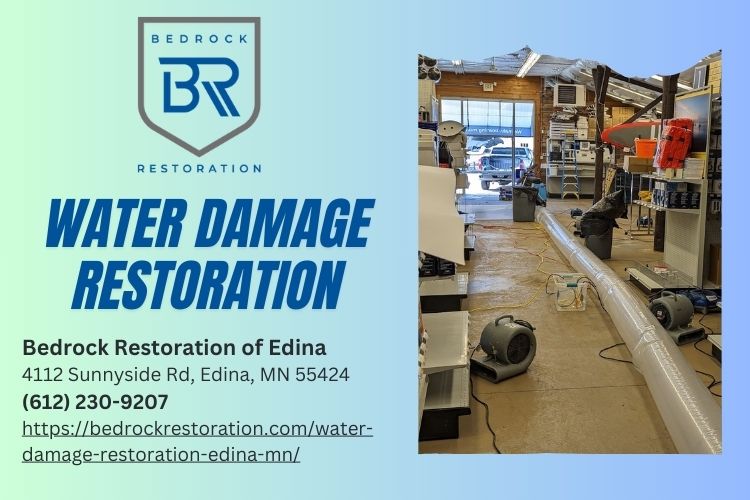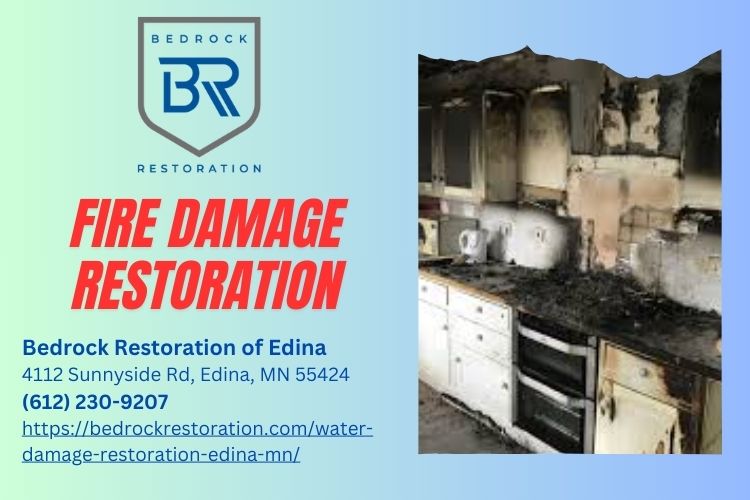Introduction
Flooding can wreak havoc on homes, especially in areas like Edina, where heavy rains and melting snow can lead to significant water accumulation. Once the floodwaters recede, the real challenge begins: preventing mold growth. Mold thrives in moist environments, making post-flood recovery efforts crucial. This comprehensive guide will delve into how to prevent mold growth after flood damage restoration in your Edina home, focusing on practical steps homeowners can take and the importance of professional assistance from companies like Bedrock Restoration of Edina.
Understanding Flood Damage Restoration Services
What Are Flood Damage Restoration Services?
Flood damage restoration services encompass a range of procedures aimed at restoring properties affected by water intrusion. This includes:

- Water extraction Structural drying Mold remediation Repairing or replacing damaged materials
Professional teams are trained to handle these tasks effectively, minimizing long-term damage and health risks associated with mold growth.
Why Hire Professionals for Flood Damage Restoration?
While some homeowners may consider DIY methods, hiring professionals ensures:
- Expertise: Trained technicians know what to look for. Equipment: Access to industrial-grade drying and dehumidifying equipment. Safety: Professionals understand safety protocols during restoration.
How to Prevent Mold Growth After Flood Damage Restoration in Your Edina Home
Preventing mold growth is not just about cleaning up after a flood; it involves a strategic approach that begins immediately after water damage occurs. Here’s how you can effectively safeguard your home:
1. Immediate Response Is Key
Act Quickly! Why Timing Matters?
The faster you act following water intrusion, the better your chances of preventing mold growth. Mold can begin growing within 24-48 hours after exposure to moisture.
2. Water Extraction Techniques
Why is Water Extraction Crucial?
Removing standing water promptly is imperative. Professional water damage restoration services utilize pumps and vacuums designed for this purpose, ensuring thorough extraction.
3. Structural Drying Process
How Does Structural Drying Work?
After extraction, drying out walls, floors, and other structural elements is essential. High-capacity fans and dehumidifiers help reduce moisture levels significantly.
4. Monitoring Humidity Levels
What Is the Ideal Humidity Level?
Keeping indoor humidity below 60% is vital for mold prevention. Use hygrometers to monitor levels regularly.
The Role of Ventilation in Mold Prevention
5. Increase Air Circulation
How Can You Enhance Airflow?
Open windows and doors whenever possible during dry weather. Additionally, ceiling fans can help circulate air within rooms.
6. Use Exhaust Fans Wisely
When Should You Use Exhaust Fans?
Exhaust fans should be utilized in bathrooms and kitchens during activities that produce moisture (like cooking or showering) to reduce humidity levels quickly.
Cleaning and Disinfecting Affected Areas
7. Clean Up Thoroughly After Water Damage
What Cleaning Solutions Are Effective Against Mold?
Using a mixture of water and detergent or specialized mold cleaning solutions helps ensure all surfaces are clean.
8. Don’t Forget About Hidden Spaces!
Mold can hide behind walls and under flooring materials; thus, inspecting these areas is crucial.
Use of Dehumidifiers Post-Restoration
9. How Do Dehumidifiers Help?
Dehumidifiers extract excess moisture from the air, making it harder for mold spores to thrive.
Insulation Considerations Post-Flood Damage Restoration
10. Insulation Maintenance Is Important
Check insulation integrity after flooding; wet insulation should be replaced as it can harbor mold even when dried out superficially.
Landscaping Tips to Prevent Future Flooding Issues
11. Evaluate Grading Around Your Home
Proper grading directs water away from your foundation, reducing potential flooding risks during storms.
Essential Repairs After Flooding
12. Repair Roofs & Gutters
Ensure that roofs are intact and gutters are clean so they can effectively channel rainwater away from your home’s base.
13. Regularly Inspect Plumbing Systems
Why Regular Inspections Matter?
Regular plumbing checks can identify leaks before they turn into bigger problems that could lead to flooding or dampness indoors.
14. Understanding Indoor vs Outdoor Mold
What’s the Difference?
Indoor molds often arise due to excess moisture inside homes while outdoor molds thrive naturally but can infiltrate if conditions allow it through windows or vents.
15. Educating Family Members on Mold Risks
How Can Awareness Help?
Teaching family members about areas prone to dampness encourages vigilance in identifying potential issues early on.
16. Professional Inspection Services
After initial cleanup efforts are complete, consider hiring professionals again for an inspection specifically focused on identifying hidden moisture pockets conducive to mold development.
FAQs
FAQ 1: What should I do immediately after a flood?
Answer: Start by assessing the situation; ensure safety first, then call professionals for water extraction as soon as possible!
FAQ 2: How long does it take for mold to grow?
Answer: Mold typically begins growing within 24-48 hours after materials become wet if not dried properly.
FAQ 3: Do I need specialized training for flood cleanup?
Answer: While some minor cleanup tasks may be manageable by homeowners, extensive flood damage restoration requires professional expertise.
FAQ 4: How often should I check humidity levels post-flood?
Answer: It’s advisable to monitor humidity levels daily until you’re confident they remain consistently below 60%.
FAQ 5: Can I use bleach on mold?
Answer: Bleach may kill surface mold but has limitations; it doesn't penetrate porous materials like wood or drywall effectively.

FAQ 6: What signs indicate hidden mold?
Answer: Musty odors, visible discoloration on walls or ceilings, or unexplained respiratory issues among occupants may signal hidden mold presence.

Conclusion
Flood damage restoration is more than just cleaning up; it's about taking proactive measures against future threats like mold growth that can compromise your health Bedrock Restoration of Edina and property value over time! By implementing effective strategies discussed above—such as timely intervention through expert services like Bedrock Restoration of Edina—you'll create a safer living environment free from harmful molds that might otherwise proliferate unchecked! So remember this comprehensive guide on how to prevent mold growth after flood damage restoration in your Edina home—because being informed is half the battle won!
Contact Us
Bedrock Restoration of Edina
Address: 4112 Sunnyside Rd, Edina, MN 55424
Phone number: (612) 230-9207